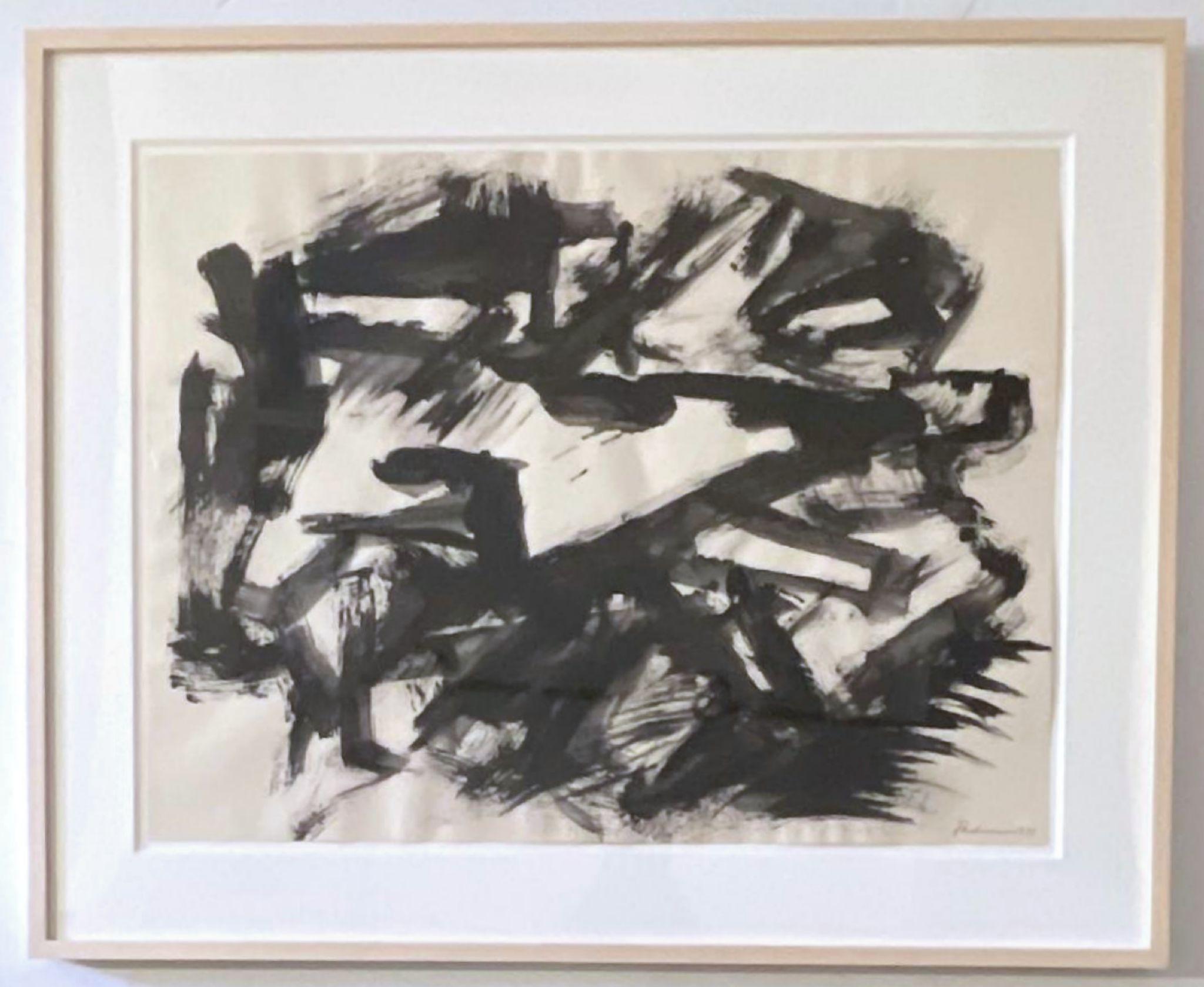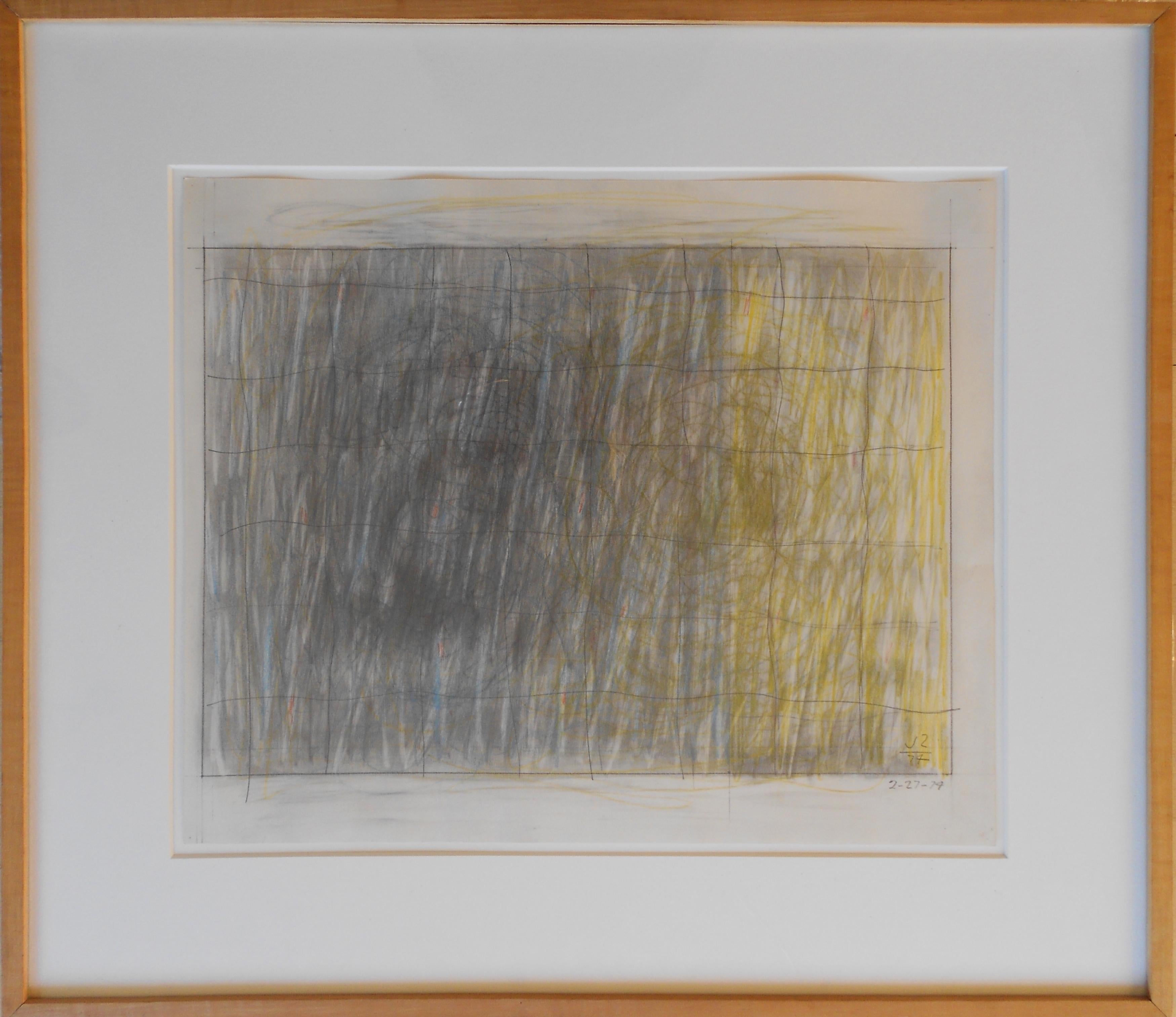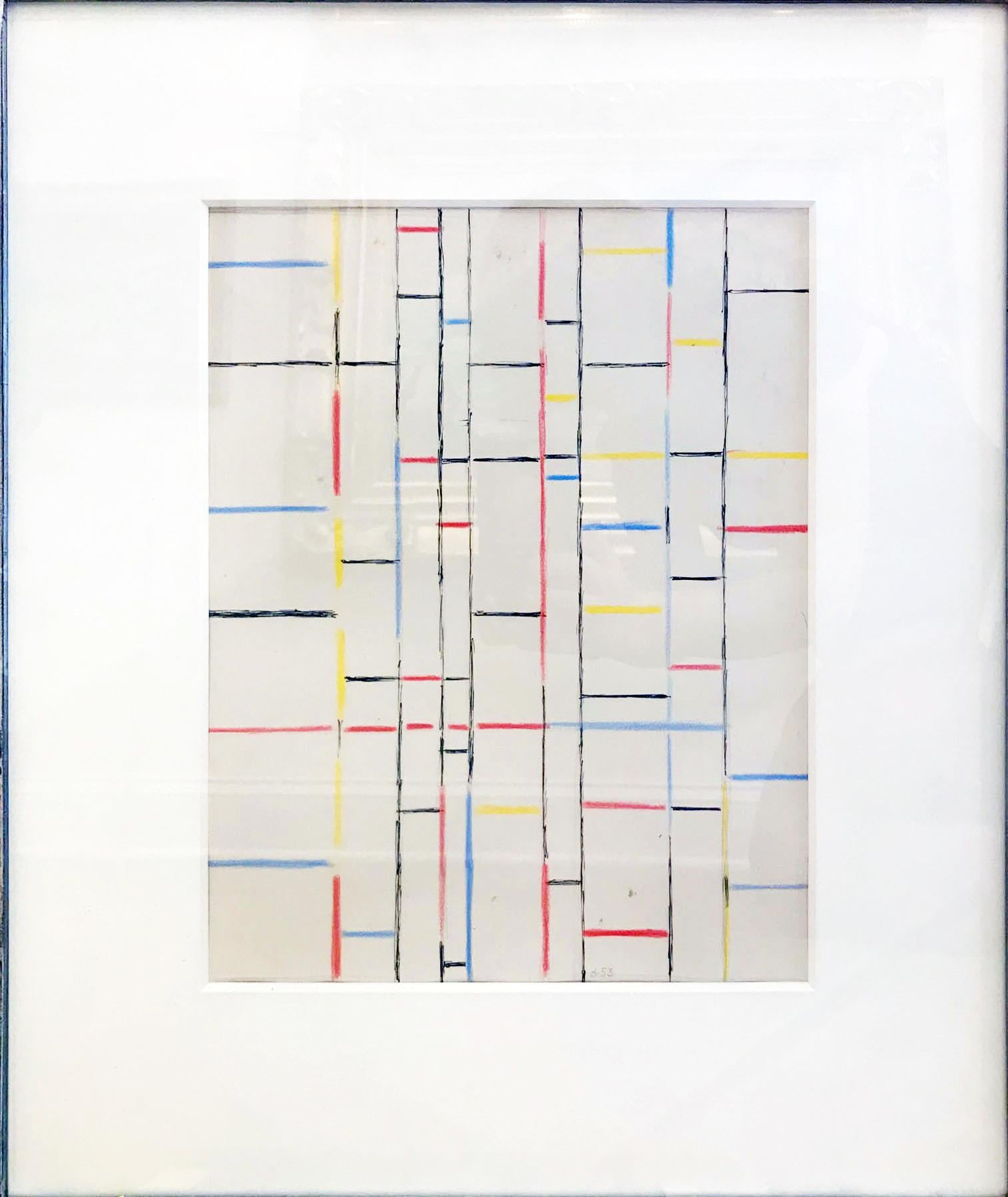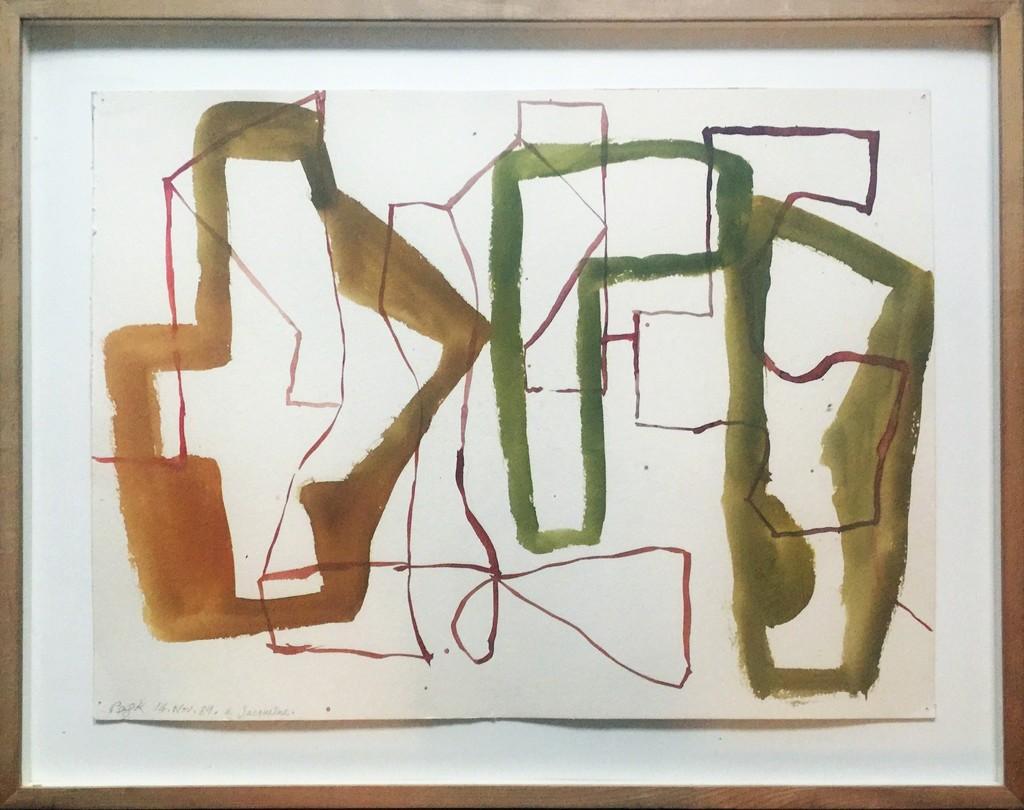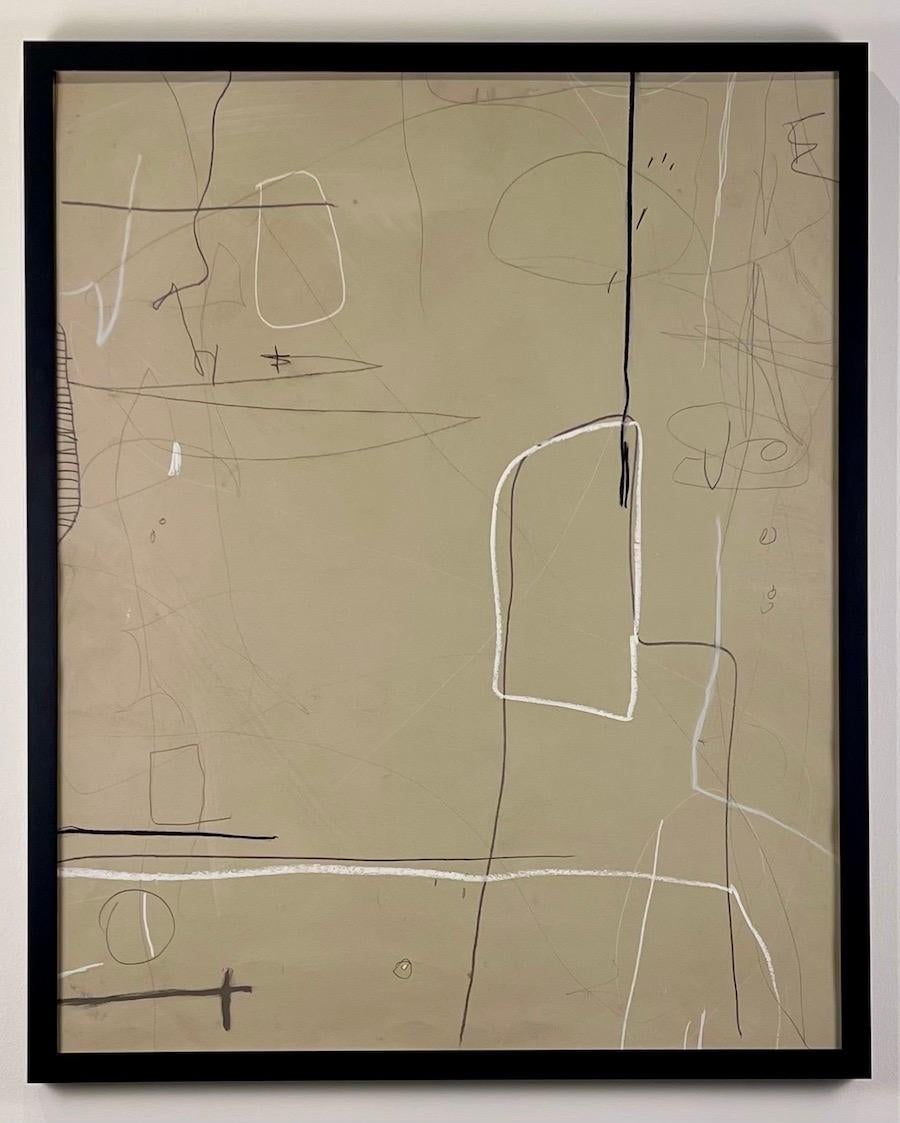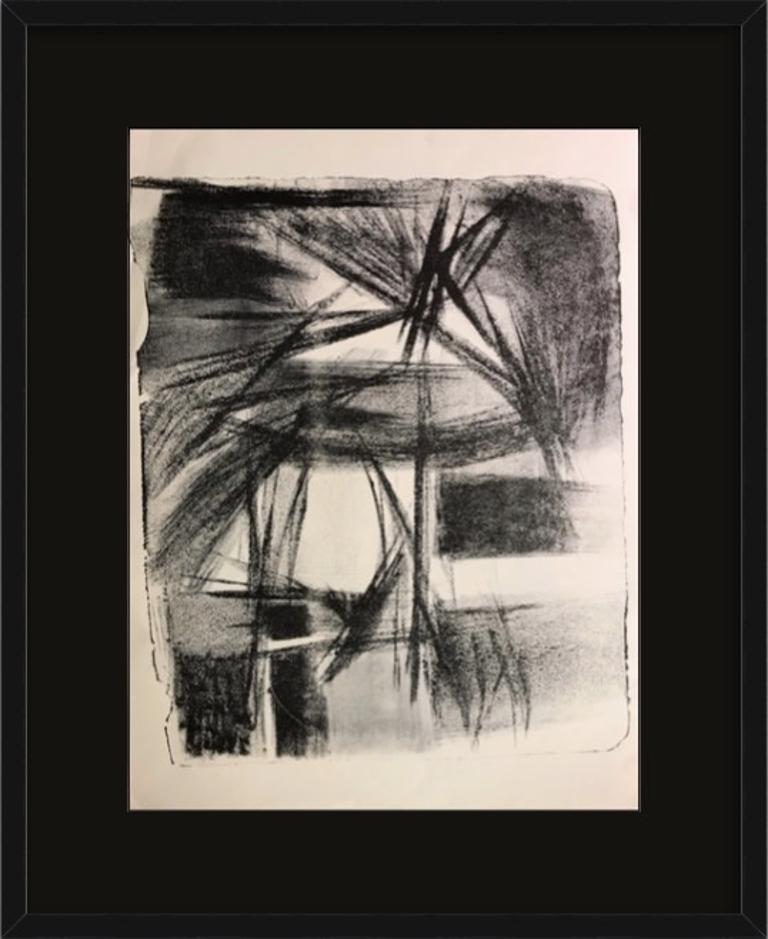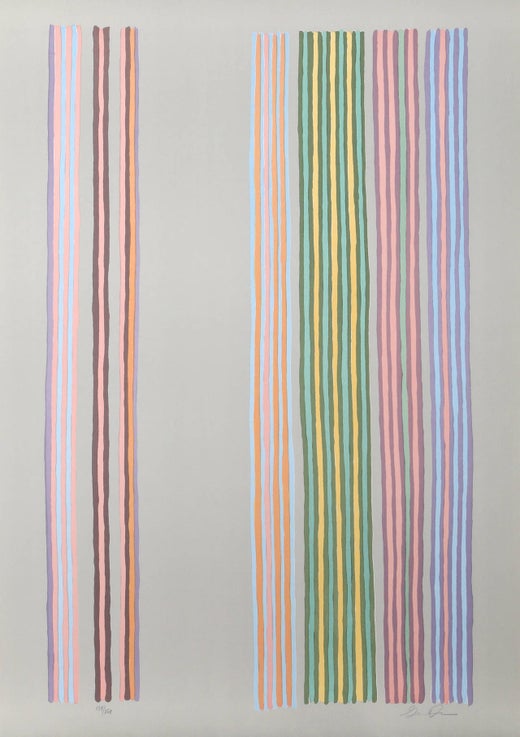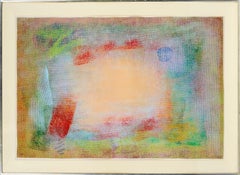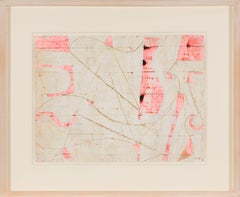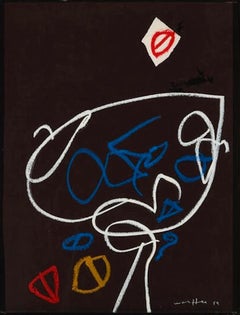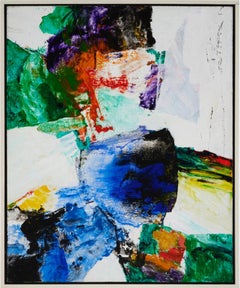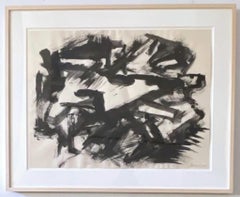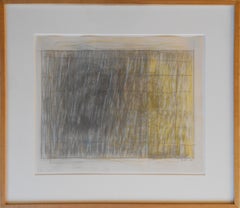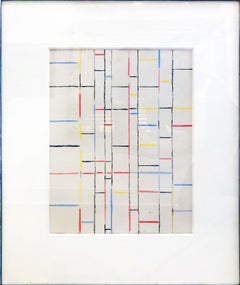Items Similar to "Untitled" 20th century on paper signed and dated drawing
Video Loading
Want more images or videos?
Request additional images or videos from the seller
1 of 9
Gene Davis"Untitled" 20th century on paper signed and dated drawing1981
1981
$9,500
£7,216.80
€8,312.61
CA$13,590.71
A$14,905.40
CHF 7,687.34
MX$178,057.63
NOK 97,498.84
SEK 91,464.98
DKK 62,101.27
About the Item
Gene Davis
1920 – active in Washington DC - 1985
Untitled
1981
Colored felt tip on paper
17 ¾ x 12 ½ inches (49 x 32 cm)
Framed dimensions: 24 x 14 inches (61x 35.5 cm)
Signed and dated: Davis 1981
Provenance:
The Artist
Phyllis Hattis Fine Arts
Private collection, Dr Silver, NY
Best known for his edge-to-edge paintings of vertical stripes in carefully demarcated bands, Gene Davis was a leading figure during the mid-twentieth century group known as the Washington Color Painters, a group that included Morris Louis and Kenneth Noland.
Davis was associated with his hometown of Washington, D.C. throughout his career. After studying at the University of Maryland, he began his professional life as a journalist. He served for many years as a correspondent for the White House as well as a sportswriter.
Davis had no formal art training, and his initial foray into the field occurred in the 1950s when he worked at the Washington Workshop with Jacob Kainen, a noted painter of abstract works who inspired many of the Washington colorists. In fact Davis became a prominent member of the Washington Color School, a group of artists who gained recognition for their use of color as a primary expressive element in their work.
In 1958 Davis created his first "vertical stripe" painting, which was twelve-by-eight inches and featured yellow, pink, and violet stripes of uneven width that alternated with regularity. One of Davis's most notable contributions to the art world is his use of vertical stripes as the primary motif in his paintings. These stripes, often of uniform width and meticulously arranged, became a trademark of Davis's style. His approach was not only visually striking but also conceptually rich, inviting viewers to explore the interplay of color and form within a seemingly simple structure. While Davis's work is primarily associated with formalism and minimalism, there is a sense of rhythm and movement in his paintings that sets them apart.
Davis taught at the Corcoran School of Art in Washington, D.C. and at various other institutions including American University, Washington, D.C. and Skidmore College, Saratoga, New York. His work may be found in many important private and public collections, including the Chrysler Museum of Art, Norfolk, Virginia; the Corcoran Gallery of Art, Washington, D.C.; the Metropolitan Museum of Art, New York; the Minneapolis Institute of Art; the Museum of Modern Art, New York; the Smithsonian American Art Museum, Washington, D.C.; the National Gallery of Art, Washington, D.C.; the Nelson-Atkins Museum, Kansas City, Missouri; the Philadelphia Museum of Art; the San Diego Museum of Art; the Solomon R. Guggenheim, New York; the Tate Gallery, London; the Whitney Museum of American Art, New York; and Yale University Art Gallery, New Haven, Connecticut.
- Creator:Gene Davis (1920-1985, American)
- Creation Year:1981
- Dimensions:Height: 14 in (35.56 cm)Width: 24 in (60.96 cm)
- Medium:
- Movement & Style:
- Period:
- Condition:
- Gallery Location:New York, NY
- Reference Number:1stDibs: LU2733216419332
Gene Davis
Davis was born in Washington D.C. in 1920 and spent nearly all his life there. Before he began to paint in 1949, he worked as a sportswriter, covering the Washington Football Team and other local teams. Working as a journalist in the late 1940s, he covered the Roosevelt and Truman presidential administrations, and was often President Truman's partner for poker games. His first art studio was in his apartment on Scott Circle; later he worked out of a studio on Pennsylvania Avenue. Davis's first solo exhibition of drawings was at the Dupont Theater Gallery in 1952, and his first exhibition of paintings was at Catholic University in 1953. A decade later he participated in the "Washington Color Painters" exhibit at the Washington Gallery of Modern Art in Washington, DC, which traveled to other venues around the US, and launched the recognition of the Washington Color School as a regional movement in which Davis was a central figure. The Washington painters were among the most prominent of the mid-century color field painters. Though, he worked in a variety of media and styles, including ink, oil, acrylic, video, and collage, Davis is best known by far for his acrylic paintings (mostly on canvas) of colorful vertical stripes, which he began to paint in 1958. The paintings typically repeat particular colors to create a sense of rhythm and repetition with variations. One of the best-known of his paintings, "Black Grey Beat" (1964), owned by the Smithsonian American Art Museum reinforces these musical comparisons in its title. The pairs of alternating black and grey stripes are repeated across the canvas, and recognizable even as other colors are substituted for black and grey, and returned to even as the repetition of dark and light pairs is here and there broken by sharply contrasting colors. In 1972 Davis created Franklin's Footpath, which was at the time the world's largest artwork, by painting colorful stripes on the street in front of the Philadelphia Museum of Art, and the world's largest painting, Niagara (43,680 square feet), in a parking lot in Lewiston, NY. His "micro-paintings", at the other extreme, were as small as 3/8 of an inch square. For a public work in a different medium altogether, he designed the color patterns of the "Solar Wall," a set of tubes filled with dyed water and backlit by fluorescent lights, at the Muscarelle Museum of Art at the College of William and Mary in Williamsburg, Virginia. Davis began teaching in 1966 at the Corcoran School of Art, where he became a permanent member of the faculty. His works are in the collections of, among others, the Corcoran Gallery of Art, the Solomon R. Guggenheim Museum, The Phillips Collection in Washington, DC, the Walker Art Center in Minneapolis, MN, The Governor Nelson A. Rockefeller Empire State Plaza Art Collection in Albany, NY, and the Smithsonian American Art Museum. He died on April 6, 1985 in Washington, DC.
About the Seller
No Reviews Yet
Recognized Seller
These prestigious sellers are industry leaders and represent the highest echelon for item quality and design.
Established in 1992
1stDibs seller since 2024
Typical response time: 13 hours
- ShippingRetrieving quote...Shipping from: New York, NY
- Return Policy
Authenticity Guarantee
In the unlikely event there’s an issue with an item’s authenticity, contact us within 1 year for a full refund. DetailsMoney-Back Guarantee
If your item is not as described, is damaged in transit, or does not arrive, contact us within 7 days for a full refund. Details24-Hour Cancellation
You have a 24-hour grace period in which to reconsider your purchase, with no questions asked.Vetted Professional Sellers
Our world-class sellers must adhere to strict standards for service and quality, maintaining the integrity of our listings.Price-Match Guarantee
If you find that a seller listed the same item for a lower price elsewhere, we’ll match it.Trusted Global Delivery
Our best-in-class carrier network provides specialized shipping options worldwide, including custom delivery.More From This Seller
View AllUntitled NY Abstract Expressionist acrylic on paper 1976
By Robert Natkin
Located in New York, NY
Acrylic on paper
25 x 36 inches (63 x 92 cm)
Framed: 31 x 42 inches (79 x 106.5 cm)
Signed and dated lower right: Natkin1976
Provenance:
Private Collection, NY
Doyle Auctions, NY, 2...
Category
1970s Abstract Expressionist Abstract Paintings
Materials
Paper, Acrylic
PIETRASANTA PAINTING, late 20th century American gouache and ink
By Caio Fonseca
Located in New York, NY
Caio Fonseca
1959 active New York City
Pietrasanta Painting (P.95.122)
1995
Goauche and ink on paper
12 x 16 inches (30.5 x 40.6 cm)
Framed dimensions: 18 x 22 inches (45.7 x 56 c...
Category
1990s Abstract Paintings
Materials
Ink, Gouache
Untitled, Oil Stick and Collage on paper, Abstract, 1989, Manny Silverman Col
By Emerson Woelffer
Located in New York, NY
Once dubbed “the Grandfather of L.A. Modernism,” the Chicago-born Emerson Seville Woelffer was active as an innovative painter, collagist, and educator throughout his long and prolif...
Category
1980s Abstract Mixed Media
Materials
Mixed Media
WHIGMARLEERIE Canadian Acrylic Mid-20th Century Abstract Canvas Painting
By John Little
Located in New York, NY
John Little
1907 – active in New York - 1984
Whigmarleerie
1966
Oil on canvas
33 x 27 inches (84 x 69 cm)
Framed dimensions: 35 x 29 inches (89 x 73.6 cm)
Signed, titled and dated v...
Category
1960s Abstract Expressionist Paintings
Materials
Acrylic, Canvas
Untitled Italian abstract 20th century acrylic on canvas
By Eugenio Carmi
Located in New York, NY
Provenance:
Court Gallery, Copenhagen, Denmark
Private Collection, Baltimore
Private Collection by descent
This painting has a Certificate of Authenticity from the Eugenio Carmi Arc...
Category
1980s Abstract Abstract Paintings
Materials
Canvas, Acrylic
GRADUS AD PARNASSUM Abstract acrylic painting 1970 bright colorful lines signed
By Jay Rosenblum
Located in New York, NY
Jay Rosenblum was a native of the Bronx who studied at Bard College and the Cranbrook Academy of Fine Arts in Bloomfield Hills, Michigan. He also passionately studied music and was a...
Category
1970s Abstract Expressionist Paintings
Materials
Canvas, Acrylic
You May Also Like
Untitled '71 Abstract Expressionist drawing. Signed by renowned sculptor, Framed
Located in New York, NY
Anthony Padovano
Untitled Abstract Expressionist drawing, 1971
Ink wash on paper drawing
Signed and dated in ink wash
Unique
Original (unique) signed Abstract Expressionist ink wash ...
Category
1970s Abstract Expressionist Abstract Drawings and Watercolors
Materials
Ink
Untitled
By Jack Tworkov
Located in New York, NY
Jack Tworkov
'Untitled,' 1974
Graphite and colored pencil
14 x 16.75 inches (image)
20 x 23 inches (sheet)
21 x 24 inches (frame)
Signed
Category
1970s Abstract Expressionist Abstract Drawings and Watercolors
Materials
Color Pencil, Graphite
$13,000
"Third Theme"
By Burgoyne Diller
Located in Lambertville, NJ
Signer Lower Right
Category
20th Century Abstract Abstract Drawings and Watercolors
Materials
Paper, Crayon, Ink
Untitled Geometric Abstraction - unique signed and inscribed work -framed
Located in New York, NY
Paul Pagk
Untitled Geometric Abstraction, 1989
Gouache and watercolor on paper
Signed, dated and inscribed "A Jacqueline".
Frame included
Excellent unique work on paper by contempora...
Category
1980s Abstract Geometric Abstract Drawings and Watercolors
Materials
Watercolor, Gouache, Pencil, Graphite
Untitled #532 by Murray Duncan – Original Contemporary Mixed Media on Paper
Located in Toronto, Ontario
Untitled #532 by Murray Duncan – Contemporary Mixed Media on Paper
Size: 32" x 40"
Unframed, signed on the back
A striking exploration of form and movement, Untitled #527 by Murray ...
Category
21st Century and Contemporary Abstract Geometric Abstract Paintings
Materials
Oil Crayon, Acrylic, Pencil
C.1950s Abstract Mid Century Lithograph
By Jerry Opper
Located in Arp, TX
From the estate of Jerry and Ruth Opper
Abstract Fireworks
1950's
Stone Lithograph on Paper
12.5" x 19", Unframed
Came from a portfolio of his work from his estate.
Jerry Opper (192...
Category
Mid-20th Century Abstract Abstract Prints
Materials
Stone
